When discussing Korea’s indie music, one thing that can’t be left out is the live music clubs in the Hongdae area. They began to appear one by one in the early 1990s, introducing new forms of music.
They also served as platforms for the debuts of indie bands and for musicians to mingle and share ideas that would redefine the Korean music scene.
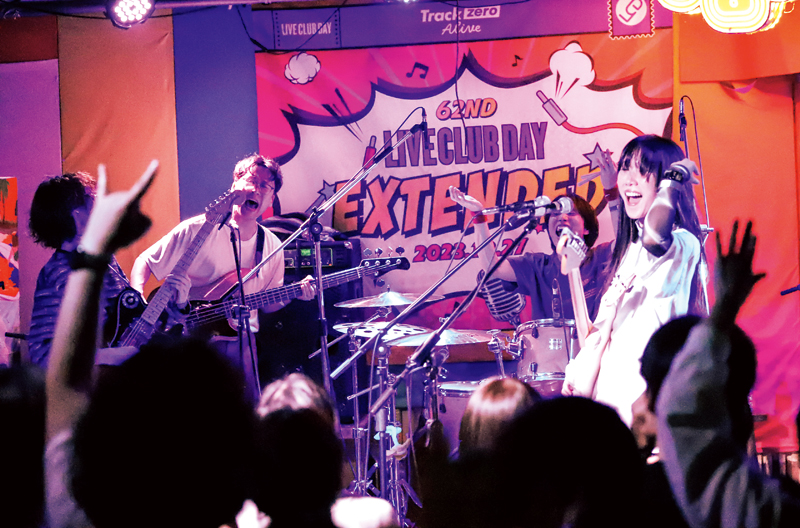
The quartet Dabda performing at Club BBang on Live Club Day in October 2023. Live Club Day is a music festival where one pass gives access to multiple clubs. The scheme is possible thanks to the dense cluster of live entertainment venues in Hongdae, a notable feature of the area.
© indieinsomnia
On that hot summer day
A world different from mine was there.
Under the scorching sun on the messy street
children spraying water everywhere.
These are the opening lyrics of “On That Hot Summer Day,” a song by alternative rock duo Weeper from their 2001 albumThe Lost Age that was born on the cusp of summer 1996. On May 25 that same year, a stage set up at a huge Hongdae parking lot thundered with raw, unfamiliar sounds. It was occupied by “delinquents” with spiky hair, decked out in leather and chains. To more than a few in the audience, their music probably sounded like unharnessed noise. To E Z Hyoung, Weeper’s lead singer, who was also present that day, the scene was “a world different from mine.” People called the music “punk,” and the event was dubbed the “Street Punk Show.”
Up until then, punk had been almost nonexistent in Korea. The Sex Pistols and The Clash, who had taken the world by storm in the latter half of the 1970s, were practically unknown to most Koreans. The Street Punk Show announced the obscure music as part of Hongdae’s underground music scene. The youth who had created it finally felt confident enough to shed their closeted existence and come above ground. E Z Hyoung wrote “On That Hot Summer Day” to capture the experience. Today, the year 1996 is considered the founding year of Korea’s indie music, and the Street Punk Show a watershed in the history of Hongdae.
THE “LIVE CLUB” ERA
The youth who had shocked the audience at the Street Punk Show were regular performers at a so-called “live club” called Drug. When it opened in July 1994, Drug was just a regular bar where you could go for a drink and listen to music. But that changed in the following spring when Drug hosted a memorial concert for Nirvana’s lead singer Kurt Cobain, who had taken his own life a year prior. The bar-cum-live club then began to hold regular performances. Sometimes, budding musicians in the audience would find themselves performing on the club’s stage a few months later. That’s how the five-man punk rock band Crying Nut got their start.
By the latter half of the 1990s, indie music became a permanent fixture of the Korean entertainment scene. This youth-driven niche in the music market was accompanied by the emergence of many live clubs in Hongdae. They included Rolling Stones (now Rollinghall), Master Plan, Blue Devil, Spangle, Jammers, Club BBang, and Freebird. Spreading to nearby areas, live clubs also popped up in Sinchon and the neighborhood bordering the back end of the Ewha Womans University campus.
The independent music scene did not go unnoticed by the mainstream media. The press were intrigued by bands with quirky names such as Sister’s Barbershop, Herbuxy Band, and Hwang Shin Hye Band. Curiosity piqued, they reported on the emergence of Korean punk bands and music lovers’ enthusiasm for a new type of music and nightlife with a different vibe. Each Hongdae club focused on a particular music genre, from punk and modern rock to hip-hop or electronic music. Some acts were effectively house bands, performing exclusively at one club. Crying Nut, No Brain, and Weeper performed at Drug, and Sister’s Barbershop and My Aunt Mary played at Spangle. Clubs sometimes produced albums with their house bands. While Drug put out a series titled Our Nation (1996), Jammers released Rock-a-doodle-doo: Rock Live Club Band Collection (1997) and Rolling Stones The Restoration (1998). Clearly, clubs controlled the pace of Korea’s indie scene in the 1990s.
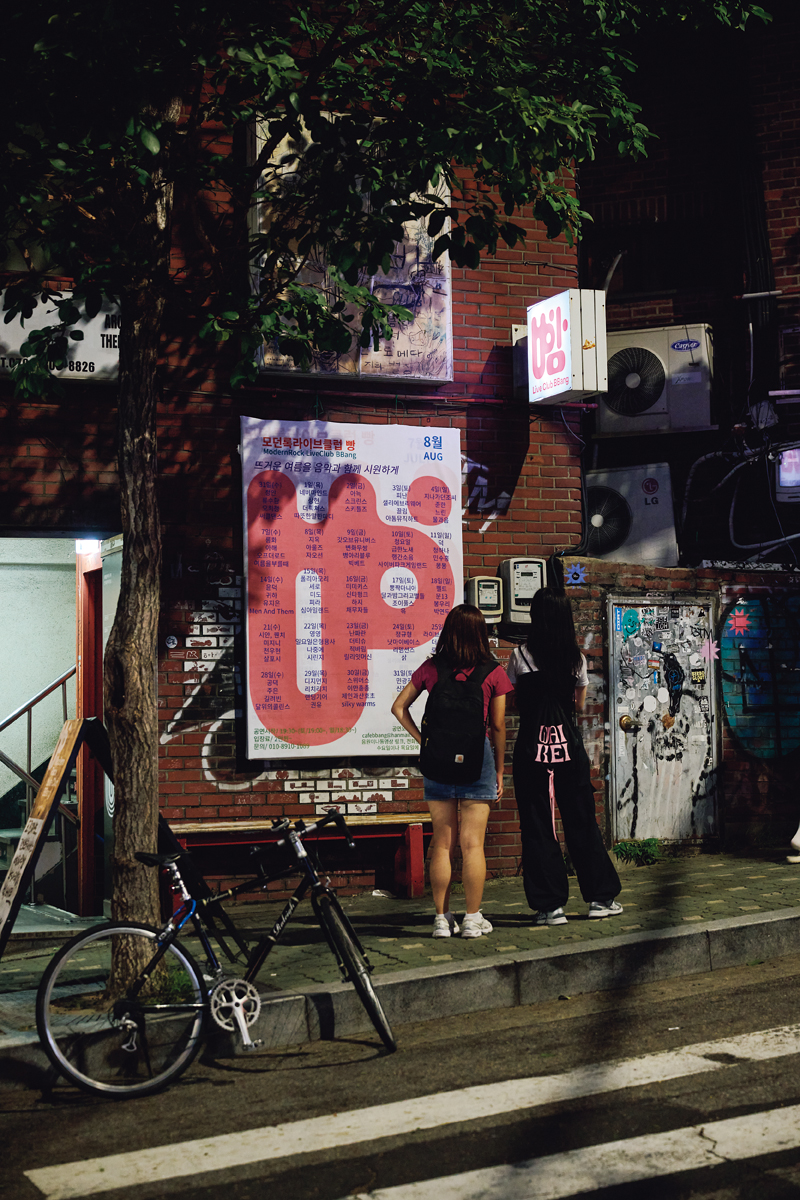
Music fans in front of Club BBang check out the lineup for the day. Opened in 1994, Club BBang primarily features folk and modern rock acts. It also produces compilation albums of its house musicians, one of which received a Korean Music Award in 2008.
ALTERNATIVE TO K-POP
Then came the 2000s, the era of entertainment companies. In Hongdae, they took over the clubs’ role of creating record labels and producing albums. Bands that had performed almost exclusively in clubs needed to sign with an agency in order to succeed. This signaled that the indie scene was becoming more systematic and structured. Some clubs attempted to establish their own labels but ended up closing due to management difficulties. Another wave of clubs rose to take their place.
Among the clubs that opened in the 1990s, only Rollinghall and Club BBang survived. New spaces like Strange Fruit, Unplugged, Club FF, and Jebi Dabang have now joined them. Although the newcomers don’t have quite the same feel as the live music clubs of the past, they represent a natural evolution of venues.
Despite these changes, Hongdae’s live music clubs retain the role of providing a platform for emerging indie bands and offer an alternative to mainstream K-pop. Each club still maintains its unique identity, showcasing artists who match its ambiance. After a long hiatus, the shoegazing band zzzaam recently held a reunion concert at Club BBang, where they started out. Before he became a star, singer-songwriter Kwon Jung-yeol, a.k.a. 10CM, also frequently performed at Club Bbang.
Strange Fruit is a venue known for putting some highly original acts on stage, and Club FF continues to offer the intense energy of rock. Indie rock band Jannabi once played to a few dozen fans at Club FF but now perform for crowds of tens of thousands.
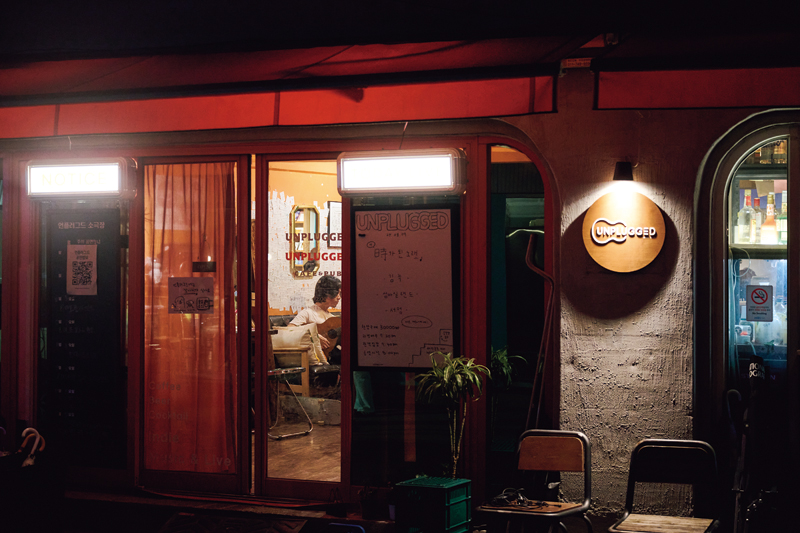
Unplugged is an indie music-themed cultural complex. It features a café on the first floor and a performance hall in the basement. The café, with its laid-back vibe, serves signature cocktails named after musicians who perform there, such as singer-songwriter Kim Sawol.
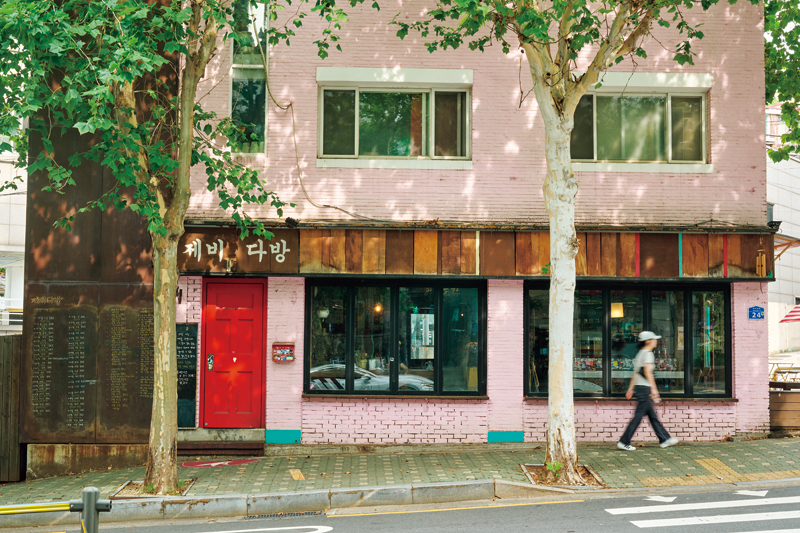
Since it opened in 2012, Jebi Dabang, located in Sangsu-dong, has been a cultural space where people connect through art. A popular spot among creators, it hosts donor-funded performances and events every weekend.
FROM HONGDAE TO GLOBAL RECOGNITION
When Hongdae hit a downturn, the remaining clubs decided to revive Live Club Day out of necessity. The music festival debuted as Sound Day in 2004, gathering the talents of Hongdae and neighboring areas to help struggling clubs and bands. It was discontinued in 2011 but revived four years later. After some initial difficulties, Live Club Day has now firmly established itself as a monthly attraction. A single pass gives club-goers access to multiple venues, but getting your hands on one of the coveted passes is nearly impossible these days. The Asian Pop Festival, held this year in collaboration with musicians from Asia who have participated in previous Hongdae events, was also made possible by the live clubs.
Many international music industry professionals say the same thing about Hongdae: there’s no place quite like it anywhere in the world. That is, it’s rare to see so many clubs with live music concentrated in one area.
The monthly Live Club Day in Hongdae and the annual global showcase event Zandari Festa both capitalize on this advantage. Named after the old name of Seogyo-dong, the heart of the Hongdae area, the three-day music festival attracts prominent figures in the global music industry. Every fall, they visit Hongdae’s distinctive venues to watch performances by local indie musicians and invite them to participate in events they organize. As a result, some Korean artists have joined the line-ups at world-famous events such as the five-day Glastonbury Festival and Liverpool Sound City in the UK, or South by Southwest (SXSW) in the U.S.
Recently, people have been saying “the band boom is coming,” as if it were a meme. While this may be wishful thinking, if the boom does happen, it would be largely due to the live music clubs. The groups leading the current move — SE SO NEON, Silica GEL, Jannabi, Hyukoh — all began their journeys in the Hongdae club scene, which has always been at the heart of Korea’s indie music.
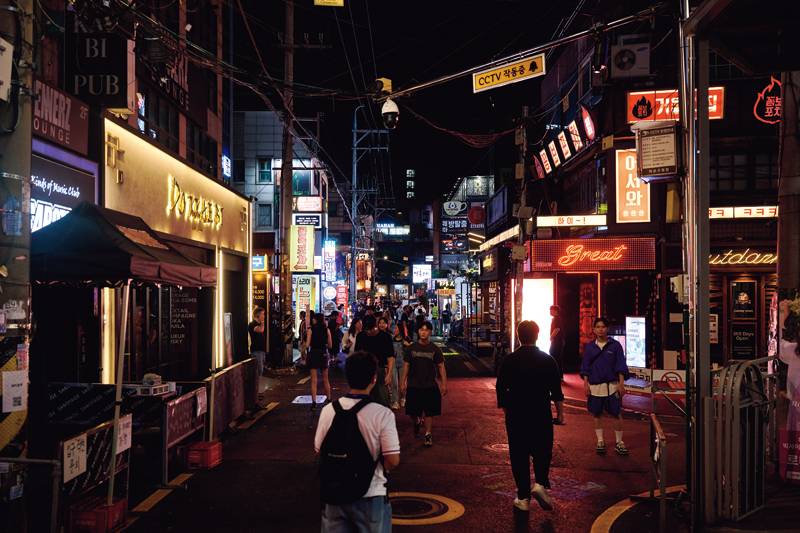
In the middle of the road extending from the front gate of Hongik University to Sangsu Station, an entertainment strip has formed, consisting of clubs for live music, dancing, and comedy.
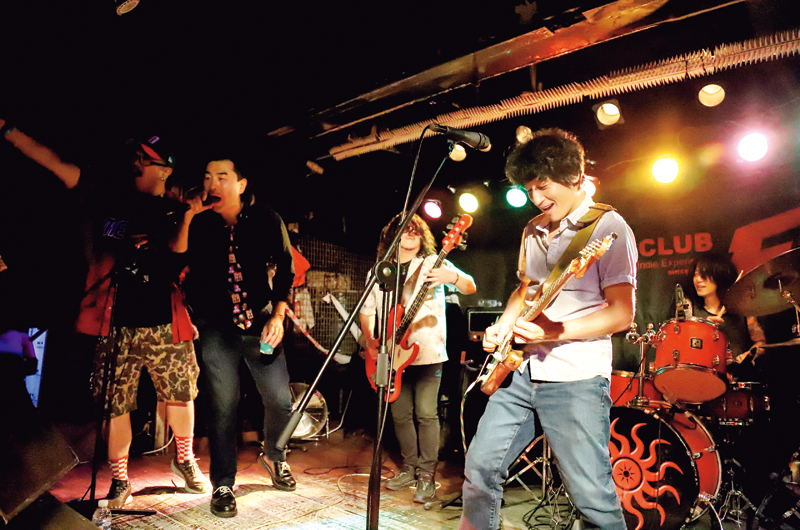
Club FF opened in 2004 and became famous as a venue for live performances and DJ parties, a departure from the clear distinction between dance and live music clubs at the time. Top Korean bands such as Crying Nut and No Brain have been performing there for 20 years.
© indieinsomnia